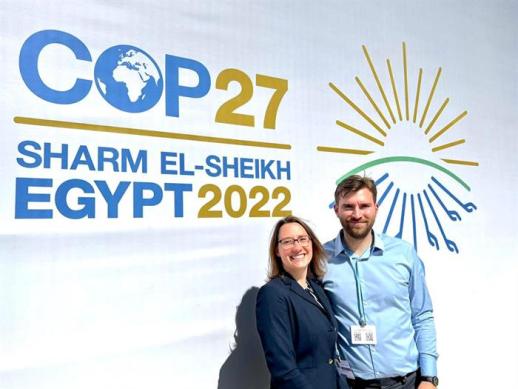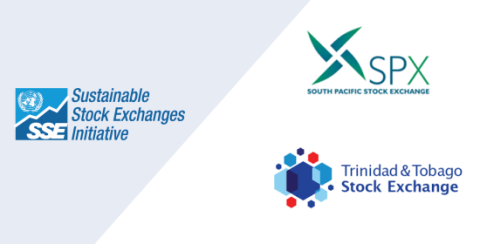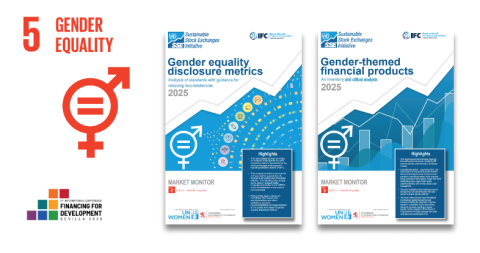
This week, governments, private sector organizations and civil society are once again coming together for the 27th annual United Nations Conference of the Parties on climate change (COP27). The objective of this highly-publicized meeting is to build consensus on key climate-related issues and to ignite and empower the political will, market infrastructure and public support for a transition to a net zero-emissions economy.
At the end of this two-week event, companies will be faced with new risks being identified, additional jargon to learn, and a growing regulatory environment requiring companies to expand their definition of “disclosure”. This builds on the substantial growth in recent years of the number of companies integrating climate related risks and opportunities into their governance, strategy, risk management and metrics/targets, and disclosing this information in alignment with the recommendations of the task force on climate-related financial disclosures (TCFD).
Stock exchanges have played an important role in supporting listed companies as they overcome challenges related to the identification, management and disclosure of climate-related risks and opportunities deemed to be material to a firm’s financial position or financial performance. In addition to providing markets with disclosure guidance for climate and other emerging transparency demands from investors, over the past year 55 stock exchanges globally have hosted training for their market specifically on climate-related financial disclosures and the TCFD. The UN SSE initiative and CDP have facilitated 188 hours of training in collaboration with stock exchanges and the International Financial Corporation (IFC) to help upskill market participants on the growing demand for climate-resilient companies and climate-related disclosures.
Building on the UN SSE initiative’s Model Guidance on Climate Disclosures and the TCFD’s recommendations, this interactive training allows companies to ask experts key questions to overcome hurdles and accelerate their climate-disclosure journeys. Through this training, the UN SSE, CDP, IFC and UN SSE Partner Exchanges have provided 14,868 participants with bespoke and interactive training to support their climate-disclosure journeys. Through this training, the co-organizers have also learned from participants what their key challenges are, what additional support is needed and how stock exchanges can better address their climate-disclosure needs. Co-facilitators of the training, SSE Academy Head Tiffany Grabski and CDP Senior Global Policy Manager, Sustainable Finance Evan Guy, share here their top 5 lessons from their experience training companies on TCFD-aligned disclosures.
Lesson 1: Less can be more
Companies are being inundated with tools, resources and guidelines. The flood of recent resources on climate-related risks and opportunities can be overwhelming and hard to navigate especially when companies are first getting started on climate-related financial reporting. For example, when we discuss with companies the use of a scenario analysis as a tool to identify, assess and prioritize climate-related risks and opportunities, the biggest concern companies will often voice is the fact that they are not climate scientists and they cannot estimate how much rain to expect in 2030 or 2050 in 1.5 or a 4 degree world. The good news is: they don’t have to be climate scientists because climate scientists have already calculated this for them. The bad news is: the majority of the companies we’ve trained are unaware of the vast amount of climate-related data available to them to make key strategic decisions for their companies.
What we’ve learned from these interactions is that while there is a mountain of data and resources companies can rely on for the various stages of their climate-related financial disclosure journey, we need to do a better job at summarizing why they should use these resources, how they can use them, and where they can find them. To get started, companies can make use of the UN SSE initiative’s Model Guidance on Climate Disclosure which provides an overview and foundation of resources that companies can start with. From there, we recommend that companies also make use of the search function on the TCFD Knowledge Hub to find the resources most applicable to their disclosure stage, industry/sector and geography. We further encourage stock exchanges to provide markets with simplified overviews of tools and resources for their market by developing their own guidance on TCFD disclosure.
Lesson 2: TCFD has gone global
Global participation in TCFD training Location where participants were when they joined a TCFD training facilitated by UN SSE, CDP, IFC and their local stock exchange
It’s often presumed that climate-related disclosures and sustainability disclosure more broadly have mostly taken root only in jurisdictions where mandatory disclosure is in place. The interest for training on TCFD, however, came from all corners of the globe. Almost 80% of participants joined TCFD training sessions from jurisdictions that do not currently require TCFD aligned climate disclosure.
This means that all stock exchanges and all markets globally can still benefit from guidance and training on climate-related issues. The UN SSE encourages stock exchanges to conduct a gap analysis of their market’s climate-resilience knowledge and needs. As the linchpin of capital market systems, exchanges sit at the center of market participants and have their finger on the pulse of the challenges facing market participants. The SSE Academy was developed to help stock exchanges to fill those knowledge gaps by working together with stock exchanges to upskill and educate markets on key sustainability topics.
Lesson 3: It’s what’s on the inside that counts
The most repeated sentence in our TCFD training has become “the TCFD does not recommend a separate climate-change report.” This is because, the biggest misconception we’ve found while training on TCFD is that companies misunderstand the main objective of the TCFD, which is to connect climate and finance. While companies are not expected to introduce information into their annual financial filings that does not have financial implications for their organization, the TCFD is designed to help companies and investors identify financially material information their current risk management and governance processes may have overlooked.
While it’s true that investors often have to judge a book by its cover (or at least by its public disclosures), the TCFD’s four core pillars ensure the appropriate internal processes are in place to create more climate-resilient companies. This is why the TCFD indicates that the recommended disclosures pertaining to governance and risk management should be considered by all companies to be financially material and disclosed in their annual financial report. Because climate-related risk is a non-diversifiable risk that affects nearly all industries and due to the unique characteristics of climate risk which unfolds beyond traditional financial time horizons, climate requires adjustments to organization’s governance and risk management processes.
The reason we think it’s so important to make it clear to participants the importance of integrating financially material climate-related information into their mainstream annual report, is to emphasize the key role these internal processes play in creating more resilient companies and as a result more resilient markets. While the TCFD is often seen as a disclosure guidance, it is much more than that: it is risk management and governance guidance. The real value of TCFD is that it helps a company to change its internal processes to ensure its survival as external changes beyond its control begin to impact its financial performance and position. To help companies better achieve this goal, stock exchanges can lead by example by aligning their own disclosures with the recommendations of the TCFD. To do this, they may wish to use the UN SSE’s Action Plan to Make Markets Climate Resilient. Stock exchanges can also be sure to clarify regulatory requirements in their markets as in many markets, listed companies are required to disclose any financially material information.
About the SSE, CDP and IFC training program on TCFD
In order to provide markets with high-quality training on climate disclosure and provide an overview of the Task Force on Climate-related Financial Disclosures (TCFD) recommendations, the UN SSE, IFC and CDP in coordination with stock exchanges are providing a multifaceted course for their markets and staff, free of charge. Training was developed with the financial support from Bloomberg Philanthropies. To arrange a training session for your market, contact the UN SSE initiative at [email protected].

